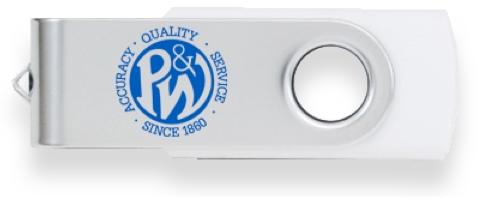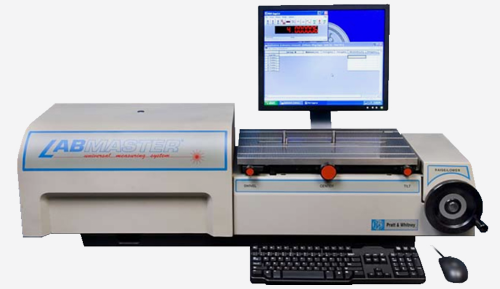A brief history:
Founded in 1860 the Pratt & Whitney name has evoked the highest standards of accuracy in both metal work and gage measurement. Founded as a part-time business by two work associates at the Hartford-based Phoenix Iron Works, the fledgling partners gave birth to a business known worldwide. Francis Pratt (1827-1902), with his penchant for machine design and accuracy, complemented Amos Whitney’s (1832-1920) workaholic business savvy and leadership skills.
Pratt & Whitney Gage Division—the Early Days
While designing and manufacturing machine tools and specialty production equipment during the Civil War Pratt and Whitney recognized the need for products with interchangeable parts, a concept thought by many to be impossible. Though the notion of interchangeable parts was not new Pratt & Whitney was the first to make it feasible. This was accomplished by precise machine tool design and formation of a gage division within the company, the forerunner of today’s Pratt & Whitney Measurement Systems. In 1860 there was no commercial standard inch—or yard or much of any other length standard—thus this was the first obstacle to be overcome. In 1879 the Pratt & Whitney Gage Division began work to establish a commercial standard inch, accurate to several millionths of an inch. Around 1880 the division produced working master copies of the Standard Yard (of both the United States and Britain) and the French Meter d’Archives. By 1882 George Bond, the head of Pratt & Whitney Gage Division, in collaboration with Harvard professor William Rogers, completed development of the Rogers-Bond Comparator which was accurate to 20 micro-inches. This machine, now in the Smithsonian, was the forerunner of the famous Pratt & Whitney Standard Measuring Machine introduced in 1885. More recent variants of the Standard Measuring Machine line are still in use today.
Pratt & Whitney Gage Division—the Early 1900s
In 1921 Pratt & Whitney introduced the most famous trade name in its gage lineup—the SuperMicrometer. With its lapped lead screw it was accurate to 100 micro-inches in direct-read mode. Over 10,000 Supermicrometers of different variants have been sold and the latest versions are among the most popular instruments currently in our line. Around 1930 Pratt & Whitney, in conjunction with General Electric, introduced the Electrolimit tailstock system for the Standard Measuring Machine and Supermicrometer which allowed machine operators to duplicate readings without relying on the “feel” of applied lead screw contact force with the artifact. During the early 1900s Pratt & Whitney also produced many hand gages such as Hoke gage blocks, plain ring gages, pin and plug gages, internal and external thread gages and a line of railroad gages.
Pratt & Whitney Measurement Systems—Recent Years
Today, Pratt & Whitney product lines include both lead screw-based machines, and glass scale and laser interferometer technology. Our current instrument lineup includes:
- Lead screw/glass scale-based (accuracy range 10-50 micro-inches):
- Digital Measuring Machine, external measurements (an enhanced version of the Standard Measuring Machine)
- Models B, C, & PC (SPL) Supermicrometer, external measurements (upgraded versions of the original SuperMicrometer)
- The Universal SuperMicrometer, internal and external measurements (new design)
- 2. Laser interferometer-based (accuracy range 2-10 micro-inches):
- The Laseruler and LabMaster Standard, external measurements
- The Laser Measuring Machine, external measurements, and LabMicrometer, internal and external measurements (both enhancements of the Digital Measuring Machine)
- The LabMaster Universal Series (accuracy 2 micro-inches):
- The LabMaster Universal 175, internal and external capable
- LabMaster Universal long-length series, Model 1000M & 1000A, internal and external capable
Press Contact:
Pratt and Whitney Measurement Systems, Inc.
Director, Marketing & Communication
Phone: (800) 371-7174
Email: info@prattandwhitney.com
Web site: www.prattandwhitney.com
Pratt & Whitney Measurement Systems and the P&W logo are registered trademarks of Pratt & Whitney Measurement Systems. All other trademarks are the property of their respective owners.

 Free USB
Free USB Product &
Product & Celebrating
Celebrating